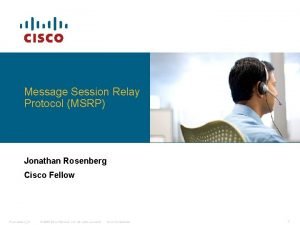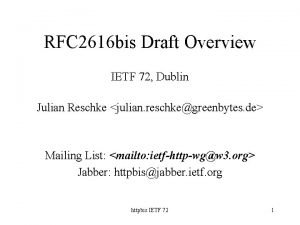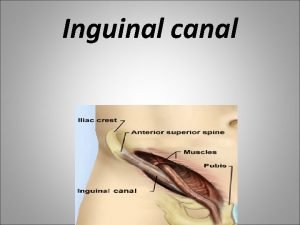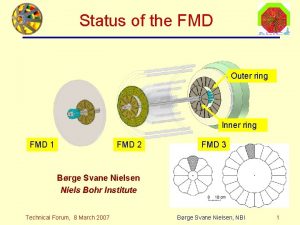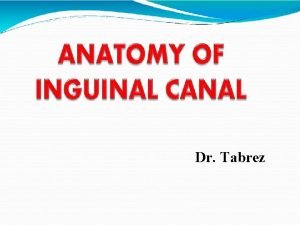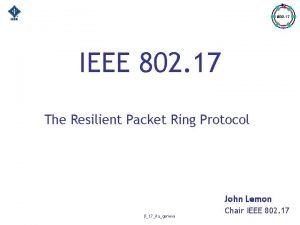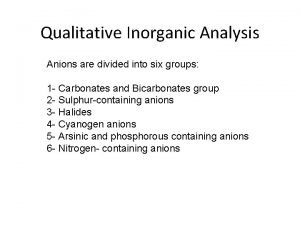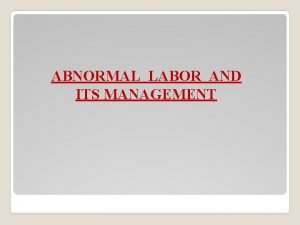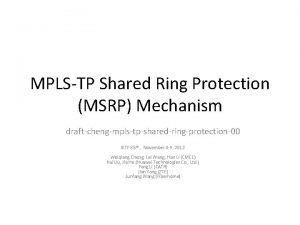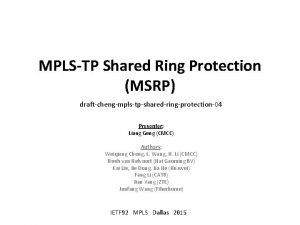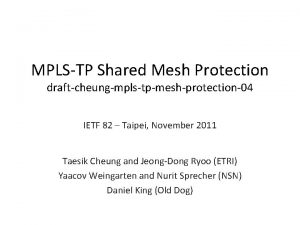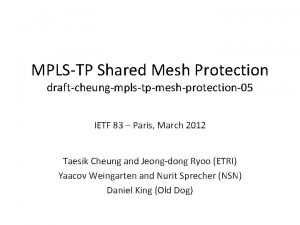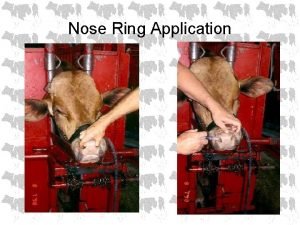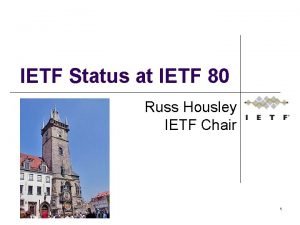MPLSTP Shared Ring Protection MSRP Mechanism draftchengmplstpsharedringprotection01 IETF












- Slides: 12

MPLS-TP Shared Ring Protection (MSRP) Mechanism draft-cheng-mpls-tp-shared-ring-protection-01 IETF 87 th , July 27 - August 2, 2013 Presenter : Hui Deng (CMCC) Authors: Weiqiang Cheng, Lei Wang, Han Li (CMCC) Kai Liu, Jia He (Huawei Technologies Co. , Ltd. ) Fang Li (CATR) Jian Yang (ZTE) Junfang Wang (Fiberhome)

Why topology-specific protection solution? • Ring topology is deployed worldwide, which can use minimized fiber resource to provide physical two tours. • Traditional transport networks (such as SDH) are constructed with ring topology, so that network infrastructure such as fiber/power supply/machine rooms are deployed for ring topology. • Maintenance engineers are familiar with ring topology based operation. • Local mesh can also be treated as Ring topology, so Ring topology specific protection solutions can also be used in those application scenarios. • MPLS-TP are often used for mission critical services such as trading, finance, mobile backhaul(especially for voice service) etc. which require sub-50 ms protection. From our test results, Ring topology specific protection can meet those requirements with minimized hardware cost.

Requirements of the Ring protection l “Multiple failures” recovery Multiple links or nodes failures are caused by single event, Such as: ü Multiple links of rings are using fibers in one cable or pipeline, and which is cut off ü network migration/network cutover in different rings at the same time Ring protection should cover following possible failures scenarios ü Multiple failures in single ring ü Multiple failures in connected rings l l l Simplify configuration and maintenance ü protection configurations should be independent of service number ü Minimize the management elements Simplify the hardware requirements ü Minimize the number of OAM entities ü Minimize the number of elements of recovery ü Minimize the number of labels required Linear protection using in field, operators require smooth migration from linear protection to ring protection without service impacted. ü Simple Wrapping solution required

Why “shared ring protection” • • Because Wrapping Solution of RFC 6378 can not cover multiple-failure issues, we will not analyze it here, we focus on the Steering Solution of RFC 6378 For a typical MPLS-TP ring topology which include 32 node. 10 bidirectional service LSP carried between each two nodes, total 4960 bidirectional service LSP. The table below is analysis of MPLS label and OAM session consumed for different protection solutions. Resource consumed in each node Shared ring protection Steering solution of RFC 6378 MPLS Labels in each node Total 434 ØRing tunnel label: 124(4*31) ØService tunnel label: 310 Total 1302 ØRing tunnel label: 1922(2*31*31) ØService tunnel label: 310 OAM sessions in each node Total 2 Ø 1 east direction and 1 west direction Total 124 Ø 31(node)* 4(anticlockwise work/protection and clockwise work/protection) … 9 8 7 … 15 1 32 16 31 17 …. . 23 24 25 ….

Why need wrapping ring protection Ring 1 A F D B Ring 2 C E interconnected ring protection scenarios • • Steering protection is hard to meet interconnected ring topology recovery requirement. When failure occurred as the figure show above, Steering protection need to notify failure information and topology to source node(as Node B). It need to introduce complex protocols. When using wrapping ring protection, the switching action only execute in failure detected node(as Node D). It is simple to implement in the network devices then steering protection.

Scope • Differences from version 00 – short wrapping is added as an optimized wrapping solution • to improve latency and bandwidth efficiency in some cases (e. g. the destination/exit node is far from the defect) – an interconnected ring protection mechanism is added • MPLS-TP, as a packet transport technology, are typically constructed with interconnected ring topology, like other transport networks (e. g. SDH). • Current ring protection mechanism can’t recover from interconnection node failure.

P 2 P short wrapping solution Short Wrapping path Tunnel 1 Node F Node A Node B physical links Rc. W Ra. W Node E Node D Protection ring tunnel will poped at ring destination node when using short wrapping path Node C Rc. P Ra. P Tunnel 1 Short wrapping path Short Wrapping v. s Wrapping (Node D as an exit node ) • • Wrapping: Protection switching happens at neighbouring nodes of the failure (Service is received from the working path at the exit node). See the black line in the figure. Short Wrapping: Protection switching occurs at the up-stream neighboring node of the failure and the exit node (Service is received from the protection path at the exit node).

Interconnected ring protection mechanism • ① Interconnected rings will be regarded as two independent rings. Each ring runs protection switching independently. Failure in one ring only triggers protection switching in itself and does not affect the other ring. • ② The service LSPs that traverse the interconnected rings via the interconnection nodes must use different ring tunnels in different rings. The ring tunnel used in the source ring will be removed, and the ring tunnel of destination ring will be added at interconnection nodes. • ③ For protected interconnection node in dual-node interconnected ring, the service LSPs in the interconnection nodes should use the same MPLS label. So either interconnection node can terminate the source ring runnel and push the destination ring tunnel according to service LSP label. • ④ Two interconnection nodes can be managed as a virtual interconnection node group. Each ring assigns ring tunnels to the virtual interconnection node group. The interconnection nodes in the group should terminate the working ring tunnel in each ring. Protection ring tunnel is a closed ring to switch with the working ring tunnel at the nodes which detect the fault. Ring tunnels to the virtual interconnection node group will be established by each ring of the interconnected rings : – one clockwise working ring tunnel to the virtual interconnection node group; – one anticlockwise protection ring tunnel to the virtual interconnection node group, – one anticlockwise working ring tunnel to the virtual interconnection node group; – one clockwise protection ring tunnel to the virtual interconnection node group. These ring tunnel will terminated at all nodes in virtual interconnection node group.

Recovery from Interconnection node failure 1. Pop Ring 1 tunnel label 2. Switch traffic runnel label 3. Push ring 2 tunnnel label Tunnel 1(D&E) Tunnel 1(H) Rc. W_D&E(D&E) Rc. W_H(F) Node A Tunnel 1(D&E) Node D Node F Tunnel 1(D&E) Rc. W_D&E(A) Rap_D&E(B) Tunnel 1(in) Node B Ring 1 Ring 2 Node G Tunnel 1(D&E) push Ring 1 tunnel Label Rap_D&E(C) Node C Tunnel 1(D&E) Tunnel 1(H) Rap_D&E(D&E)) Rap_H (H) Node E 1. Pop Ring 1 tunnel label 2. Switch traffic runnel label 3. Push ring 2 tunnnel label Node H Tunnel 1(out) pop Ring 2 tunnel Label Recovery from Interconnetcion node failure (Node D failure) ① Node. D and Node. E should deal with the same traffic LSP label. Tunnel 1 will process correctly in any node of Node. D and Node. E;

MSRP Field trial and deployment in CMCC • • CMCC have done field trial of more than 100 nodes(from Huawei) networks in Gangdong province, and the result shows: – MSRP can improve the network survivability and provisioning. – Smooth migration from linear protection to ring protection. Huawei, ZTE, Fiberhome and WH-NEC can support MSRP already item Test result(200 Tunnel configuration) Interconnected Ring switching 23 ms~37 ms time Step 1: establish runnel for each node using NMS. Migration from Step 2: Move all work tunnel to the ring. linear protection to Step 3:Delete linear protection ring protection tunnel. If using Interconnected ring mechanism. Operation time : less then 10 min PTN network topology in the field trail

Silicon support and latest Lab test results 2 3 5 1 4 N Failure Point Description p. The test bed is based on Centec's switching chip CTC 5160, which has Silicon. Level MSRP Support p. Line-rate test traffic as 352 Mbps (500, 000 pps single tagged packet), 200 LSP instances Test Result Protection Switch Recovery 1 Link Failure between DUT 1 -DUT 4 11. 3 ms <0. 1 ms 2 Link Failure between DUT 1 -DUT 2 19. 56 ms <0. 1 ms 3 Link Failure between DUT 2 -DUT 5 9. 18 ms <0. 1 ms 4 Link Failure between DUT 5 -DUT 6 19. 28 ms <0. 1 ms 2&4 Link Failure between DUT 1 -DUT 2 and DUT 5 -DUT 6 20. 42 ms <0. 1 ms 5 Node Failure of DUT 2 20. 76 ms <0. 1 ms

Next Step • MSRP protocol to be added. • Any enhancement based on the feedbacks from the group

